How to kitesurf: Backside Air – Strapless – North Kiteboarding Academy
If you know how to do an Ollie and a jump on a twintip board, this will help you a lot when learning your first backside air.
The kite stearing is very similar to a jump on a twintip board. Before takeoff you steer the kite up to around 12 o´clock and for landing you send it back down again. For your first backside airs, try to steer the kite less aggressively than with twintip jump and no further back than 12 o´clock. This will make it easier to keep the board on your feet!
Let´s have a look at the backside air in detail.
Step back to the tail of the board and carve a small turn upwind.
Popping the board out of the water is key for the backside air, so while pushing the tail of your board into the water, shift the weight from the heels to the toes – this will lift the windward rail of the board which is essential for most jumps with your strapless board.
When the windward rail is higher, the wind presses the board to your feet.
The second thing that helps you to not lose contact with your board is the fact that the nose of the board is facing into the wind and is higher than the tail – to get into this position it’s important to quickly bend your front knee during takeoff
After takeoff use the toes of your back foot to pull the tail of your board up and into the wind. Directing the tail upwind will bring the nose down and downwind – this is exactly what you want: carve upwind for takeoff , turn during the jump, and land downwind
And finally for the landing, try to shift your body weight slightly onto your front foot.
Let´s remember the key elements:
step back to the tail and make a small carving turn upwind
With the kite nearly at 12 o´clock, pop the board out and shift the weight from the heels to the toes of your back foot to get the windward rail higher
also pull down on the bar on takeoff
after take off bend your front knee and use the toes of your back foot to direct the tail of your board up and against the wind.
before landing, let go the bar half way
turn downwind and shift your weight to the front foot for landing




